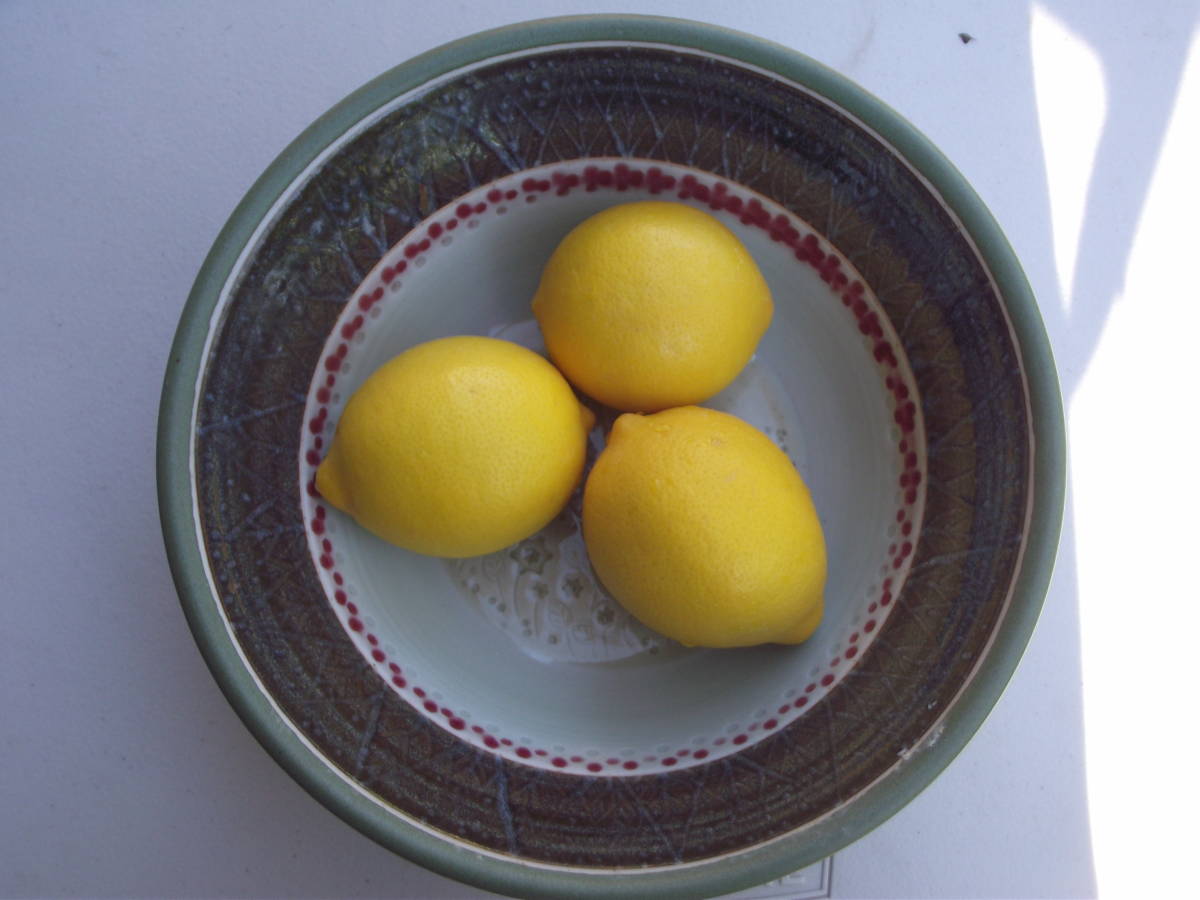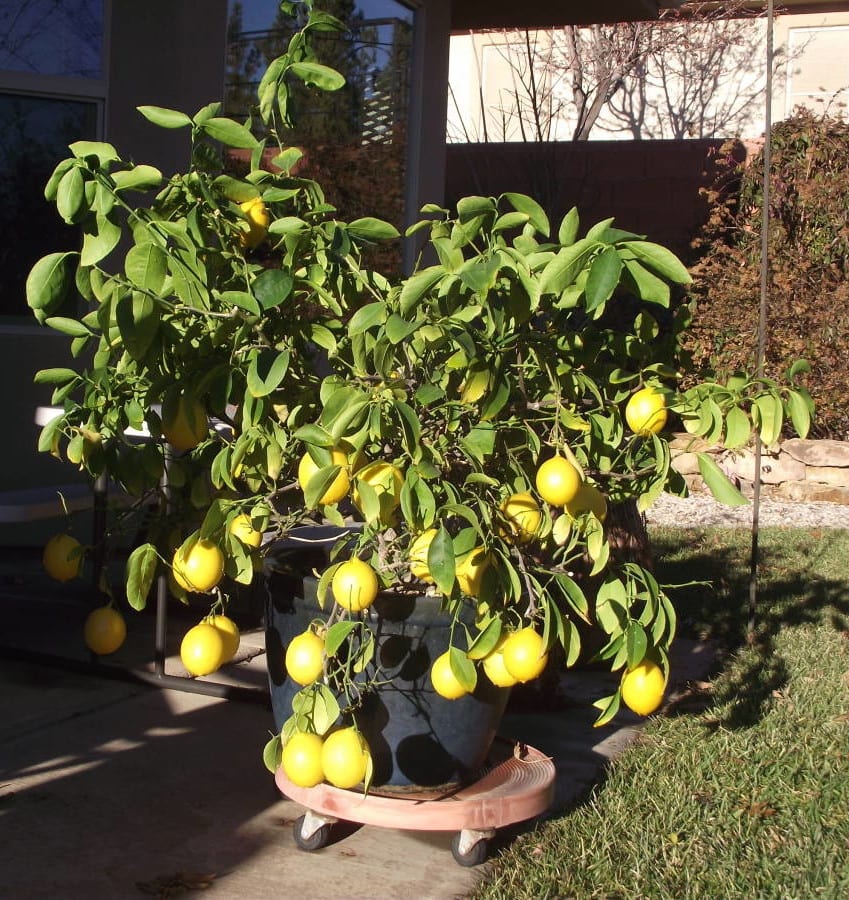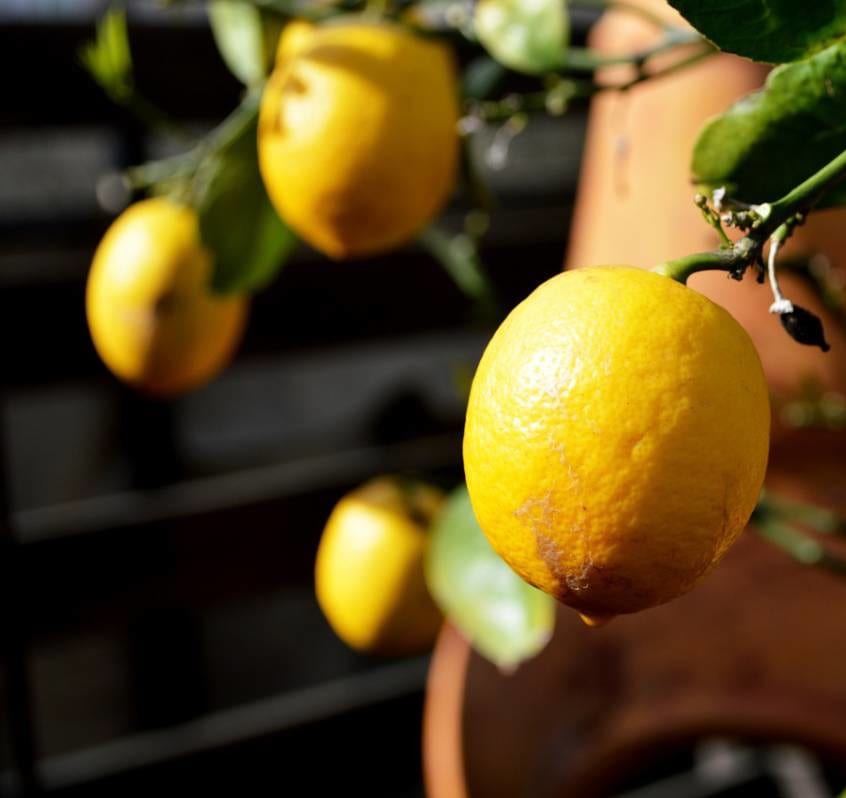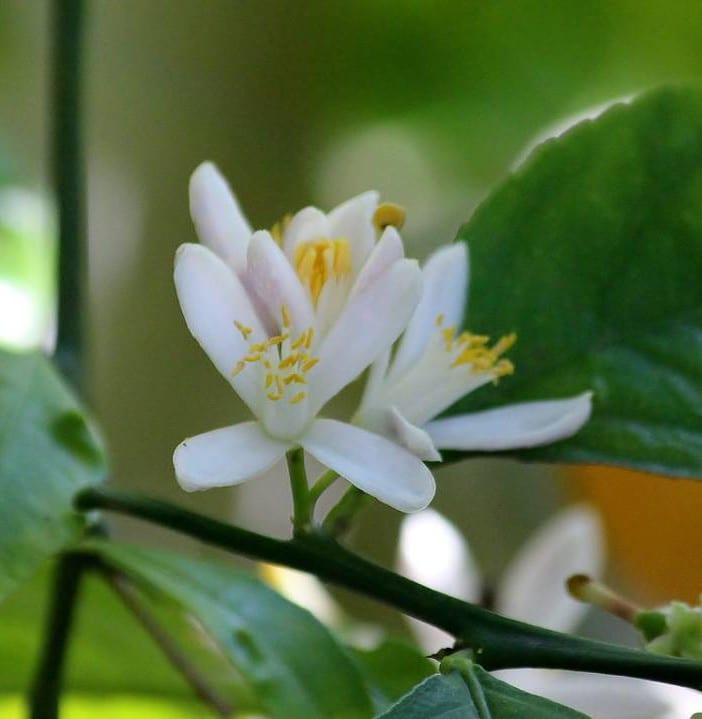
So you want to know the secrets for successfully growing citrus in southern Utah? Well, I’ve got ’em! They are not really secrets, just tips. However, it’s not for the neglectful gardener to take on growing in southern Utah. I’m not trying to talk you out of it, but you need to understand the dynamics of providing a citrus-growing environment in a non-citrus-growing environment.
Four things are needed for successfully growing citrus in southern Utah. First, you need a citrus plant. I have a Meyer lemon. I love this little shrubby tree. It gets more attention than any other plant that lives inside, or outside, of my house. Because you’ll be loving this plant so much, you ought to choose a citrus that you love. Lemons, limes, oranges, grapefruit, or kumquats will do just fine. There are many varieties of these available at local nurseries and online.

Second, you need a pot in which to plant your citrus. Lots of containers will do. Just make sure it’s two to three times wider than the pot that your citrus was planted in at the nursery, and the same depth or just a little deeper. This will give it room to grow but will slow down the growth when it get bigger so you don’t have a giant citrus tree that you have to move around. (More on that in a bit.) You also want it to have holes in the bottom for drainage. This container may be a larger plastic nursery bucket or a beautifully glazed ceramic pot.
Third, you will need some high-quality potting soil. Plant your citrus in the new pot, making sure it’s planted at the same depth it was in the old nursery bucket. Water thoroughly after planting and when the top inch of the soil it dry. As easy as this sounds, you are well on your way to growing citrus in southern Utah!
 The fourth ingredient in growing citrus in southern Utah is making your citrus-growing life easy by procuring a plant dolly for your citrus. Just Google “plant dolly,” and tons of examples pop up. I have this this one. I’ve had it for close to 10 years, and without it I would not have a successful Meyer lemon in southern Utah. When temps are going to drop below 32 degrees, I wheel my precious lemon into the house from its regular location on my southeast-facing patio. Often, I can move it back outside the next day. However, if it’s gloomy, overcast, and not close to 50 degrees, it stays in the house until it is a nice day. If you leave your citrus in the house without direct sunlight for too long, it will start to drop leaves from lack of sun exposure.
The fourth ingredient in growing citrus in southern Utah is making your citrus-growing life easy by procuring a plant dolly for your citrus. Just Google “plant dolly,” and tons of examples pop up. I have this this one. I’ve had it for close to 10 years, and without it I would not have a successful Meyer lemon in southern Utah. When temps are going to drop below 32 degrees, I wheel my precious lemon into the house from its regular location on my southeast-facing patio. Often, I can move it back outside the next day. However, if it’s gloomy, overcast, and not close to 50 degrees, it stays in the house until it is a nice day. If you leave your citrus in the house without direct sunlight for too long, it will start to drop leaves from lack of sun exposure.
I like to water my lemon while it’s outside. Then I give it a shower to remove any dust and dislodge any pests, like spider mites. Let it drain completely while it’s outside, then move it back into the house for the night. It’s likely that you will only be moving your citrus in and out of the house during the months of December and January. One January day, I had forgotten I had moved my lemon outside. It stayed outside all night and endured 27 degrees! It didn’t die, but it was so ugly. It lost about two thirds of its leaves. I had to do some waiting and pruning to see a beautiful lemon tree again. Just get a plant dolly and make the relocation of your citrus as easy as possible … and don’t forget it when it’s outside for the day.
 Those are the four things that are most essential to successfully growing citrus in southern Utah. Your citrus will probably start blooming in January or February. Getting it outside for the bees to do the deed is very important for lemons to appear later. It’s crazy how the bees will find your sweet smelling citrus flowers and even be waiting for you to move it outside so they can get to it.
Those are the four things that are most essential to successfully growing citrus in southern Utah. Your citrus will probably start blooming in January or February. Getting it outside for the bees to do the deed is very important for lemons to appear later. It’s crazy how the bees will find your sweet smelling citrus flowers and even be waiting for you to move it outside so they can get to it.
When night time temps consistently stay above 32 degrees you can leave your citrus outside until the fall. It needs some direct sunlight, but it doesn’t need it all day. Mine gets some intense sun for just a few hours in the early part of the day. I like to keep it on my patio where I can enjoy it and easily move it indoors in the winter.
It’s really not difficult to grow citrus in southern Utah. Get the four items I mentioned above, and move it a bit for a couple of months during the winter. You can do this! Nothing beats picking and eating, or juicing, homegrown citrus. Not to mention sniffing those sweet-smelling citrus flowers. Welcome to gardening in southern Utah.




Good info. I love my lemmon. It’s a little bit of work but well worth it.
Wow. That actually sounds manageable. Could they live inside year round in a sunny location?
That is so cool that you can have a citrus tree in St. George with the right tree care. I love that we can grow trees here that can’t grow in northern Utah, like palm trees. Trees are the best.
Thanks for this information, I am ready to get started (after a brief vacation or two).
We have sego palms, a Mexican hat palm, various cacti and succulents we move outside during the summer and back inside during the winter. Sounds like you love your lemon tree just as much. I’m looking at getting a lime tree and this sounds doable! Thanks for all the great info!
Is only St George considered truly “southern Utah” or do Cedar City and the New Harmony area also count? My husband and I will be retiring to property near the Kolob Canyons park entrance. I want to make sure I’ll be able to grow my own citrus.
The New Harmony is at a higher elevation than St. George, where I grow my citrus. You will experience longer and colder winters than I do. However, it is still possible to grow citrus following the same guidelines in this article. Watch the temps and make sure your citrus is not left outside in temps below 30 degrees, and try to keep your plants dust free by periodically spraying them with water in the shower or outside on warmer days to prevent pests. A south facing spot against the house on a 45 degree day is a great time and place to wash your citrus outside and get some sun for a couple of hours. Just don’t forget it’s out there. Good luck!
Pienso llevar un cítrico que me nació se puede de ir q solo no se q sea la verdad tengo varios cítricos en California y q el que creció apenas dio una flor q no se q sea pero pienso llevarlo a Utah, a West Jordan espero se logre
I think it’s worth a try if you love citrus and are willing to give it the extra attention and care it needs to live in the colder Utah climate. Good luck!